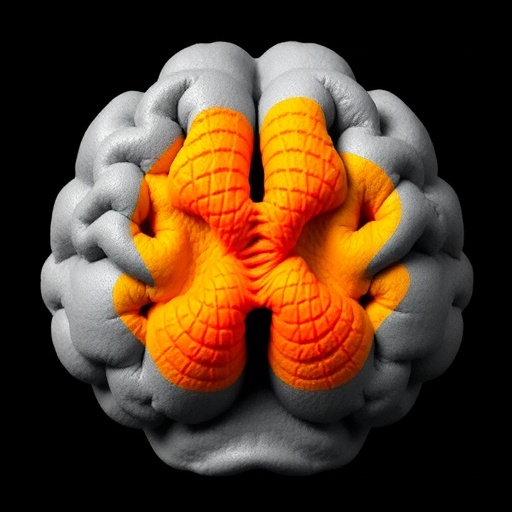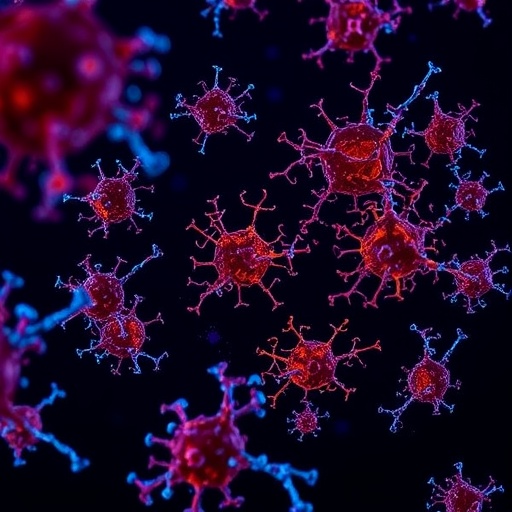A groundbreaking advancement in robotic palpation technology has been unveiled, promising to revolutionize in situ tissue biomechanical evaluation during minimally invasive surgeries, particularly within luminal organs. This novel approach ingeniously integrates a deployable continuum endoscope equipped with an optical coherence tomography (OCT)-based elastographic probe, termed ElastoSight. By leveraging a sophisticated dual-modal tactile sensing technique that synergizes circumferential and sliding B-scan imaging modes, the system enables real-time, three-dimensional profiling and segmentation of intracavitary tumor microstructures with unprecedented precision and efficiency.
Robotic palpation has long been recognized as essential for the early detection and diagnosis of pathological tissues; however, the acquisition of real-time biomechanical properties and interaction feedback during surgical procedures remains a formidable challenge. Conventional surgical robotic systems, despite featuring tactile feedback mechanisms, often lack the autonomous intelligence necessary to interpret complex tissue mechanics on their own. This limitation constrains surgeons’ ability to detect subtle abnormalities beyond visual observations. The newly developed hybrid tactile imaging strategy addresses this gap by employing OCT-based tactile sensing that captures intricate subsurface stiffness variations of soft tissues, thereby enhancing decision-making capabilities during interventions.
Central to this innovation is the ElastoSight probe, a miniature device designed to be delivered through the endoscope’s working channel. This probe supports two complementary scanning modalities: a motor-driven circumferential rotation for active palpation to pinpoint stiffness peaks indicative of tumor centers, and a motorized drag-based sliding scan that traces lesion boundaries for precise morphological delineation. The robotic endoscope offers four degrees of freedom—axial rotation, translation, and bidirectional bending—enabling comprehensive access to complex intraluminal environments. The system’s spectrometer-based spectral domain OCT unit boasts remarkable specifications, including an axial resolution near 2.7 micrometers, imaging depth exceeding 1 millimeter, and a high A-line acquisition rate peaking at 250 kHz, facilitating dynamic scanning at approximately 40 frames per second rotationally and linear drag velocities ranging from 100 to 400 micrometers per second.
The transformative power of this approach lies not only in its hardware but also in its underlying computational algorithms. Tumor centroid localization is formulated as an optimization problem, identifying the global maximum of the stiffness field across the tissue surface. This is achieved through a Bayesian framework employing Gaussian Process regression, which iteratively refines the spatial sampling grid from coarse to highly granular resolutions. Initial random palpations provide a prior distribution, and each subsequent sensor measurement dynamically updates the model, optimizing future sampling points by balancing exploration and exploitation. This methodology dramatically reduces the number of required palpation points, achieving near-perfect accuracy in centroid localization with a margin of error down to 0.032 millimeters.
Once the centroid is established, the system transitions to an advanced boundary segmentation protocol utilizing the sliding B-scan modality. The probe delicately slides along multiple radial paths extending from the tumor’s center under low-friction contact, capturing unique optical signatures generated by tissue deformation at boundary interfaces. A pair of distinctive optical pulses—corresponding to entry and exit boundary points—are detected through characteristic positive and negative spikes in OCT backscatter profiles. This pulse detection strategy enables unequivocal boundary identification with minimal data acquisition, as each scan is essentially a single A-line intensity trace correlated to probe displacement, dramatically enhancing real-time processing and reducing computational burden by orders of magnitude compared to traditional circumferential OCT scans.
Extensive experimental validation on synthetic tissue phantoms of varying geometries, including circular, rectangular, and horseshoe-shaped inclusions, has demonstrated the robustness and precision of this bimodal tactile tomography system. Compared across multiple active sampling algorithms, the proposed Expected Value of Residual (EVR) strategy yielded superior centroid localization performance with F1 scores approaching 0.9 after only ten iterations. Meanwhile, the progressive sector-density approach to boundary sampling—transiting from quartered to up to 16-directional scans—substantially reduced segmentation errors, achieving shape reconstruction accuracies nearing 99.4%. These quantitative metrics underscore the potential of this technology to support surgeons in accurately mapping lesion contours during oncological interventions.
Compared to conventional endoscopic optical coherence tomography that requires dense circumferential scans comprising thousands of A-lines per revolution, this novel tactile imaging framework remarkably shrinks data volume without compromising spatial resolution or diagnostic fidelity. The real-time capabilities introduced here pave the way for augmented surgical perception, equipping robotic systems to autonomously interpret biomechanical tissue properties and make informed decisions during delicate procedures. This is particularly critical in luminal organs, where early-stage tumor detection and precise margin assessment remain paramount yet challenging with existing imaging modalities.
Beyond technical achievements, this research holds significant clinical implications. By effectively bridging the gap between tactile sensing and high-resolution imaging, the ElastoSight system fosters a new paradigm for minimally invasive surgery, enhancing both safety and efficacy. Surgeons can now potentially receive detailed, quantitative feedback on tissue stiffness gradients and lesion morphology in situ, enabling better differentiation between malignant and benign structures. Moreover, the adaptability of the robotic endoscope with multiple degrees of freedom enables access to anatomically complex regions that were previously difficult to assess thoroughly.
Looking forward, the research team, led by Wenchao Yue from The Chinese University of Hong Kong, envisions integrating this tactile tomography framework into complete surgical robotic platforms equipped with closed-loop control systems. This integration aims to facilitate real-time registration and alignment of tactile data with robotic movement, supporting autonomous lesion localization and segmentation within dynamic physiological environments. Planned extensions include multimodal signal fusion, depth-resolved elastography to characterize layered tissue architectures, and incorporation of machine learning models for enhanced decision-making intelligence.
This pioneering work also charts a path towards experimental in vivo validation, with ongoing projects aimed at testing autonomous palpation and tactile imaging in animal models under realistic physiological conditions. Such studies will be critical to ascertain the robustness, safety, and clinical translatability of the technology. Enhancements in probe miniaturization, friction reduction, and computational speed are concurrently being pursued to further improve the sensitivity and responsiveness of the system during live procedures.
In sum, this revolutionary bimodal tactile tomography system harnesses the synergy of Bayesian sequential palpation and OCT-based elastographic imaging to provide surgeons with an unprecedented toolkit for intracavitary microstructure profiling and segmentation. By dramatically improving lesion detection accuracy and reducing procedural complexity by over 6000-fold, this innovation stands to significantly augment the capabilities of robotic minimally invasive surgery. Its potential impact extends beyond oncology to a broad spectrum of diagnostic and therapeutic applications where tissue biomechanics play a decisive role.
The study, titled “Bimodal Tactile Tomography with Bayesian Sequential Palpation for Intracavitary Microstructure Profiling and Segmentation,” was published in the journal Cyborg and Bionic Systems on September 2, 2025. This breakthrough represents a convergence of cutting-edge advances in biomedical optics, robotic manipulation, and computational intelligence, heralding a new era of precision medicine driven by autonomous tactile diagnostics and imaging.
Subject of Research:
Robotic bimodal tactile tomography for intracavitary tissue biomechanical evaluation and lesion profiling.
Article Title:
Bimodal Tactile Tomography with Bayesian Sequential Palpation for Intracavitary Microstructure Profiling and Segmentation
News Publication Date:
September 2, 2025
Web References:
DOI: 10.34133/cbsystems.0348
Image Credits:
Wenchao Yue, The Chinese University of Hong Kong
Keywords:
Health and medicine, Mathematics, Research methods
Tags: Bayesian sequential palpationbimodal tactile tomographycontinuum endoscope innovationshybrid tactile imaging strategyintracavitary microstructure profilingminimally invasive surgery advancementsoptical coherence tomography elastographyreal-time biomechanical evaluationrobotic palpation technologysoft tissue stiffness variationssurgical decision-making enhancementstumor microstructure segmentation techniques





